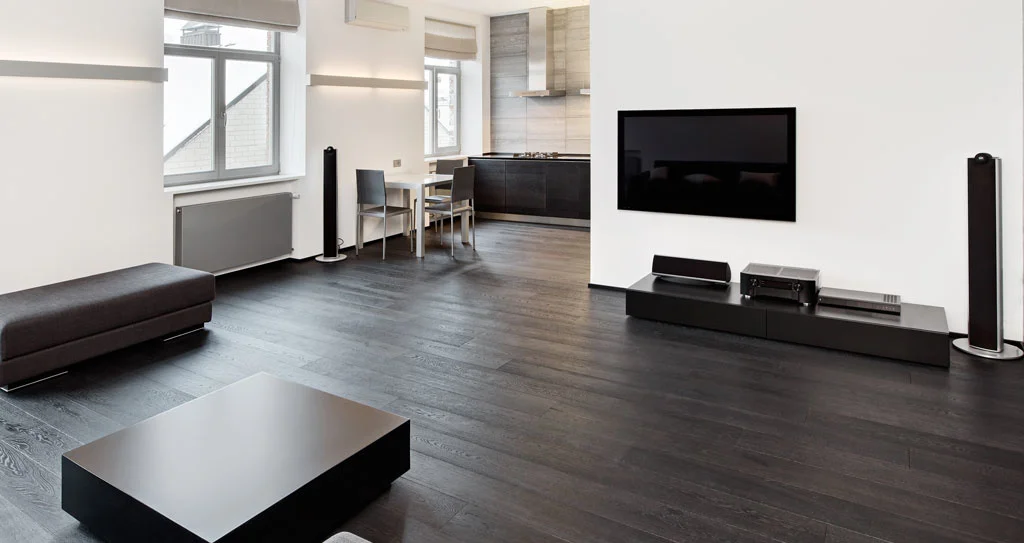Choosing the right flooring can transform your home, blending style, durability, and value. While traditional solid hardwood has long been a favorite, engineered hardwood floors are gaining popularity for their unique advantages. If you love the timeless look of wood but need a more versatile and resilient option, engineered hardwood might be the perfect fit.
This guide will walk you through everything you need to know about engineered hardwood. We'll explore its construction, compare it to solid hardwood, and highlight its many benefits. You'll also learn about installation options and how to care for your new floors to keep them looking beautiful for years to come. By the end, you'll have a clear understanding of whether this innovative flooring solution is right for your home.
What Are Engineered Hardwood Floors?
Engineered hardwood provides the classic beauty of real wood with enhanced stability. Unlike solid hardwood, which is a single piece of wood from top to bottom, engineered hardwood has a multi-layered construction. This design makes it more resistant to the effects of temperature and humidity changes.
This stability is why flooring professionals often recommend engineered hardwood for installations where solid wood might not be suitable. This includes below-grade areas like basements, homes in humid climates, or installations over concrete subfloors.
The Anatomy of an Engineered Hardwood Plank
To understand the benefits of engineered hardwood, it helps to know how it's made. Each plank consists of several layers bonded together under heat and pressure.
Top Layer (Wear Layer)
This is the part you see and walk on. It's a layer of real, solid hardwood, often featuring popular species like Oak, Maple, or Hickory. The wear layer gives the floor its authentic wood grain, color, and texture. Its thickness can vary, which impacts the floor's longevity and ability to be refinished.
Core Layers
Beneath the wear layer is a dense core. This is typically made from multiple layers of plywood or a high-density fiberboard (HDF). The layers of the core are arranged in a cross-grain pattern, with each layer running perpendicular to the one above and below it.
The Stability of Cross-Grain Construction
This cross-grain structure is the secret to engineered hardwood's stability. Wood naturally expands and contracts with changes in moisture and temperature. In a solid wood plank, this movement can lead to warping, cupping, or gapping. The layered construction of engineered hardwood counteracts this natural tendency. As one layer tries to move in one direction, the adjacent layer holds it in place, resulting in a floor that remains flat and intact.
Engineered Hardwood vs. Solid Hardwood
While both flooring types offer the beauty of real wood, their structural differences lead to distinct advantages and applications.
| Feature | Engineered Hardwood | Solid Hardwood |
|---|---|---|
| Construction | Multi-layered with a real wood top layer and a plywood/HDF core. | A single, solid piece of wood. |
| Stability | Highly stable; resists expansion and contraction from humidity changes. | Prone to expanding, contracting, and warping with moisture changes. |
| Installation | Can be installed on any level of the home, including basements and over concrete. | Typically not recommended for below-grade installations or over concrete. |
| Moisture | More resistant to moisture, making it suitable for kitchens and half-baths. | Susceptible to damage from moisture and high humidity. |
| Refinishing | Can be refinished 1-3 times, depending on the thickness of the wear layer. | Can be sanded and refinished multiple times. |
The superior stability and moisture resistance of engineered hardwood make it a more versatile choice for modern homes.
Benefits of Engineered Hardwood Floors
Choosing engineered hardwood offers several key advantages for homeowners.
- Greater Stability: The cross-grain core construction makes it far less likely to warp or cup compared to solid wood, ensuring a long-lasting, flat surface.
- Moisture Resistance: Its layered design makes it more suitable for areas where moisture can be a concern, such as kitchens, basements, or homes in humid climates.
- Installation Versatility: Engineered hardwood can be installed using various methods, including glue-down and floating, directly over concrete subfloors. This expands your flooring options to every level of your home.
- Authentic Wood Beauty: With a top layer of genuine hardwood, you get the same beautiful look and feel as solid wood flooring.
Installing Your Engineered Hardwood Floors
One of the significant benefits of engineered hardwood is its flexibility during installation. The most common methods are:
- Glue-Down: The planks are glued directly to the subfloor. This method creates a very stable, solid-feeling floor and is ideal for concrete subfloors.
- Floating: The planks are clicked together and laid over an underlayment without being attached to the subfloor. This is a faster, easier installation method and can help with sound reduction.
For the best results, it's always recommended to work with a professional installer. Companies like Creative Floors Aurora can ensure your subfloor is properly prepared and the installation is done correctly, protecting your investment and ensuring your warranty remains valid.
Keeping Your Floors Looking New
Proper maintenance is simple and will keep your engineered hardwood looking beautiful for years.
- Regular Cleaning: Sweep, dust mop, or vacuum (with a soft brush attachment) regularly to remove dirt and grit that can scratch the finish.
- Use the Right Cleaner: Only use a cleaning product specifically recommended for hardwood floors. Apply it with a damp microfiber mop and dry the floor immediately afterward. Never use water, vinegar, bleach, ammonia, oil soaps, or abrasive cleaners, as these can damage the finish and may void your warranty.
- Preventive Measures:
- Place doormats at all entryways to trap dirt and moisture.
- Use area rugs in high-traffic zones.
- Apply felt pads to the bottom of all furniture legs to prevent scratches.
Is Engineered Hardwood Right for You?
Engineered hardwood flooring offers a powerful combination of beauty, durability, and versatility. It provides the authentic look of solid wood while offering superior stability that makes it suitable for almost any room in your home. Its resistance to temperature and humidity changes means you can enjoy the warmth of wood in kitchens, basements, and even over concrete slabs.
If you're looking for a flooring solution that is both practical and stylish, engineered hardwood is an excellent choice. With a wide range of wood species, finishes, and plank sizes available, you can find the perfect floor to match your home's decor.
Ready to explore your options? The experts at Creative Floors Aurora can help you find the ideal engineered hardwood floor for your space and budget. With a comprehensive warranty, including a Lifetime Structural Warranty on many products, you can invest with confidence.

